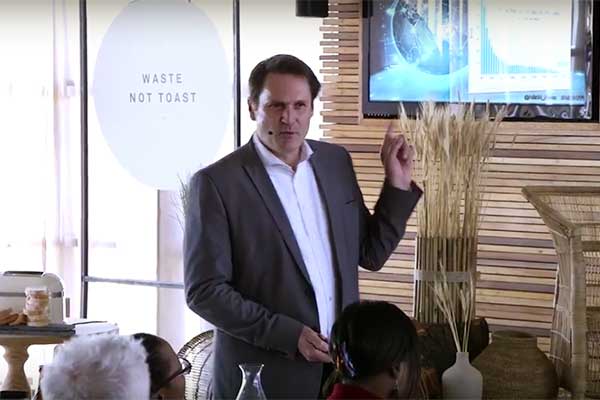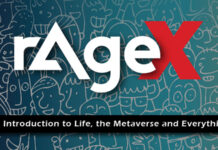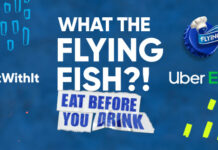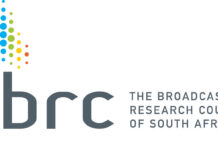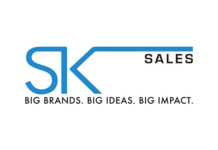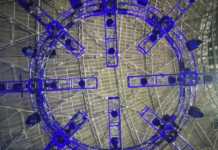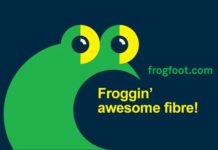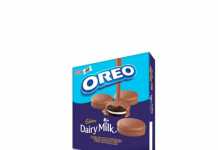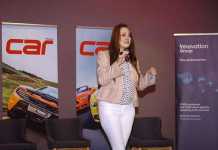Renowned futurist, academic and innovation expert, Pieter Geldenhuys, explored the latest technology trends with a forward vision at Ads24’s Food for Thought event, a morning of in-depth, interactive discussion, networking, socio-political and business insights and fascinating food. Ads24 provided food for thought and a networking opportunity for senior media industry professionals at this thought leadership event, at The Venue- Greenpark in Sandton on 25 May.
Geldenhuys looked at some of the trends shaping our world and the future of various technologies that would impact our lives: the future of security; a revolution in farming; whole new ways of looking at transport, quantum encryption; quantum computing; biotech; biomedicines and CRISPR-Cas9 genome editing. He looked at the implications of a future with an abundance of free, sustainable energy; how we could become masters of our own evolution by engineering our own DNA; and how the symbiosis between technology and human beings has redefined us.
Geldenhuys believes that the only way to effectively predict the future is to create it. He offered insights into how businesses and industries, like media, can remain relevant by using and co-creating technology. He explored how opportunities could be harnessed, and the future that could happen in this ecosystem of possibility through technology, social and economic changes. The technology is there, but it is yet to be determined which technologies will be adopted on a significant scale. One of the topics of particular relevance to the media industry was his exploration into brand archetypes and the future of advertising.
The granularity of understanding the decision to purchase
Consumer decisions are based on a number of factors, based on their lifestyles, habits and the context or environment in which the decision to purchase is made. Nearly all decisions are emotional rather than logical at their root. Advertisers need to target the consumer based on the reason they are consuming the particular product, rather than looking at the product features and consumer demographics. Consumer decisions are made based on our emotional state and marketers need to understand the granularity of how we interact with brands and products.
Emotions are underpinned by archetypes
Our emotions are underpinned by archetypes that are inherent in all of us and make up the collective unconscious. All of the civilizations around the world have been linked to these underlying emotions or archetypes through their belief systems and cultures in different ways. These universal symbols were first officially defined as archetypes by Carl Jung in 1919 and then expounded upon by Joseph Campbell in 1949 and Margaret Mark in 2001. About 15 years ago we began realising that all the dominant brands in the world are aligned to these archetypes.
Archetypal personalities include:
· The Innocent – that promises that the world is open and we are free to be ourselves
· The Explorer – who does not want to be fenced in
· The Sage – who believes the truth will set you free
· The Hero – where there is a will there is a way, conquering all obstacles in his path
· The Outlaw – breaking all the rules even in business
· The Magician – allowing everyone to believe that it can happen
· The Regular Guy/Everyman – who believes that all men and women are created equal
· The Lover – I only have eyes for you
· The Jester – who says if I can’t dance, I don’t want to part of your revolution
· The Caregiver – love thy neighbour
· The Creator – who believes that if it can be imagined it can be created
· The Ruler – power isn’t everything, it’s the only thing
Geldenhuys then asked the audience to come up with words that describe car brands and looked at how these brands are aligned with archetypes:
· Mercedes Benz – The Ruler
· BMW and Porsche – The Hero
· Audi – The Creator
· Volkswagen – The Regular Guy/Everyman
· Alpha Romeo – The Lover
· Volvo – The Caregiver
· Rolls Royce – The Magician
· Jeep – The Explorer
The most dominant brands in the world are aligned to underlying archetypes, and reinforcing that link to the archetype is critical to a brand, even in a multimedia space. So what does this all mean?
Consumer decisions, the basal ganglia and news
We make decisions based in a part of our brain called the basal ganglia and what this does is constantly monitor if our brain is in an excited state or not. So what excites us? News and novelty excites us, that’s why we read the newspaper in the morning or listen to the radio at eight ‘o clock, that novelty triggers our brain, music and humour also triggers our brain. Novelty is an enormously powerful driving force for human beings. Even the deal sheets we get in our newspapers trigger novelty and dopamine release in our brain. We don’t make decisions based on rational thinking, we make decisions based on the state of our brain at that point. We have to realise that a far deeper understanding and insight into the human brain is required and that will give us a unique perspective on the opportunities of the future.
How do we identify the core needs of our customer segments?
When we look at the business model canvas, it’s about how we identify the core needs of our customer segments and how we create a value proposition to uniquely address those core needs. We are seeing a whole seed change in the way the world works. Advertising is changing and we can no-longer stand on a big mole hill saying, ‘hey buy my product’, the mole hill has been replaced by a million whispers. The focus is no longer on the 90% who aren’t your clients, the focus is on the 10% that are, because if you satisfy them, they will tell the rest.
Ads targeted according to personality type
You can now get graphs of human behaviour from Google and social media and create personality profiles using artificial intelligence (AI) engines. We are getting new market categorisations. In the past we had categorisations and segments and we did research to see how people fitted into these, but we now are creating a brand new model and we are looking at a whole new ecosystem of value. What strategists need to do is to provide different advertisements for different personality types and the actions that they want them to take. Agencies need to create different advertisements targeting different personality types. These need to target consumers based on which archetype they are aligned with in a particular context and in relation to a particular product type.
You need to speak to the person and not simply sell a product. It’s no-longer about the act of consumption, or the directors and brand identities based on the company and what it produces, instead marketing strategy needs to be based on the identities and needs of the consumers and what they require from the brand – that is the future.
View the Food for Thought Twitter feed #ads24FFT and remember to follow Ads24 @Ads24_News.



